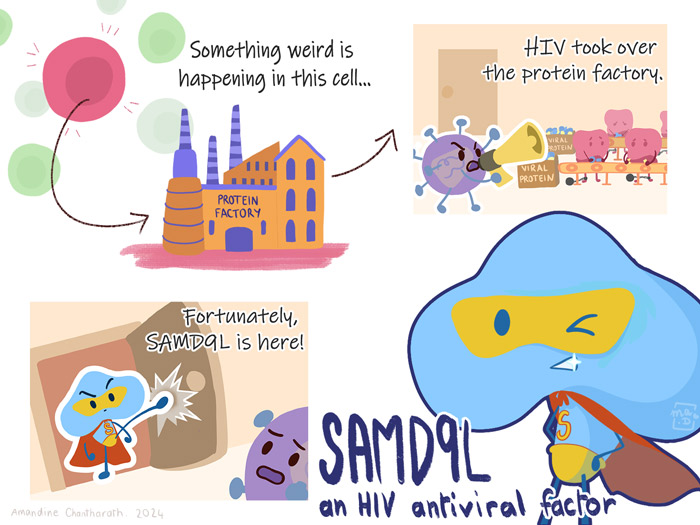Researchers Identify a Novel Cell Protein that Can Control HIV Growth
By Jeffrey Laurence, M.D.

Research question
Most cells, animal and plant, contain “restriction factors,” normal proteins that can suppress the growth of a variety of viruses, thereby representing a first line of defense against such pathogens.
Four such proteins—TRIM5α, APOBEC3G, tetherin, and SAMHD1—have received enormous interest over the past two decades related to the possibility that they might serve as models for novel strategies to control HIV. This is linked to the fact that HIV itself has evolved ways to counteract the activity of these restriction factors. It has led to exploration of the possibility that normal cell proteins that can control the growth of other viruses in human cells might also control HIV.
Findings
The SAMD9 family of cell proteins is unusual in that these proteins are involved in life-threatening genetic diseases affecting the immune system and blood-forming cells, but they also restrict the growth of pox viruses, acting through suppression of viral protein translation. amfAR Malthilde Krim Fellow Dr. Lucie Etienne, working with colleagues in Lyon, France, discovered that the interferon-stimulated SAMD9L, but not the closely related protein SAMD9, restricts the late phases of HIV-1 replication as well as that of pox viruses.

Impact
The authors conclude that “This provides novel links and therapeutic avenues against viral infections and genetic diseases” including HIV.
amfAR’s role
amfAR was a funder of this research.
Original article
http://www.ncbi.nlm.nih.gov/pubmed/38959200
Dr. Laurence is amfAR’s senior scientific consultant.
Share This:
